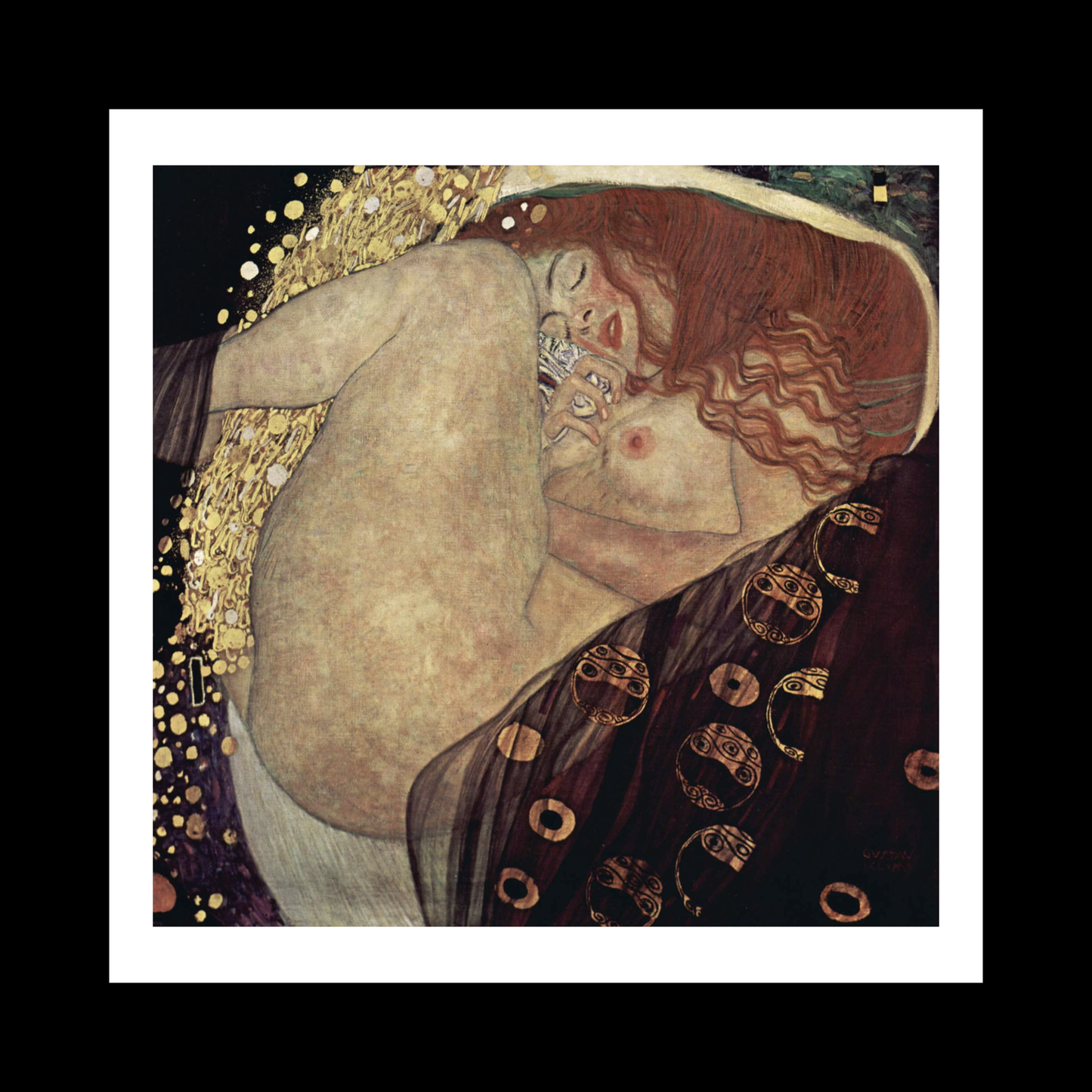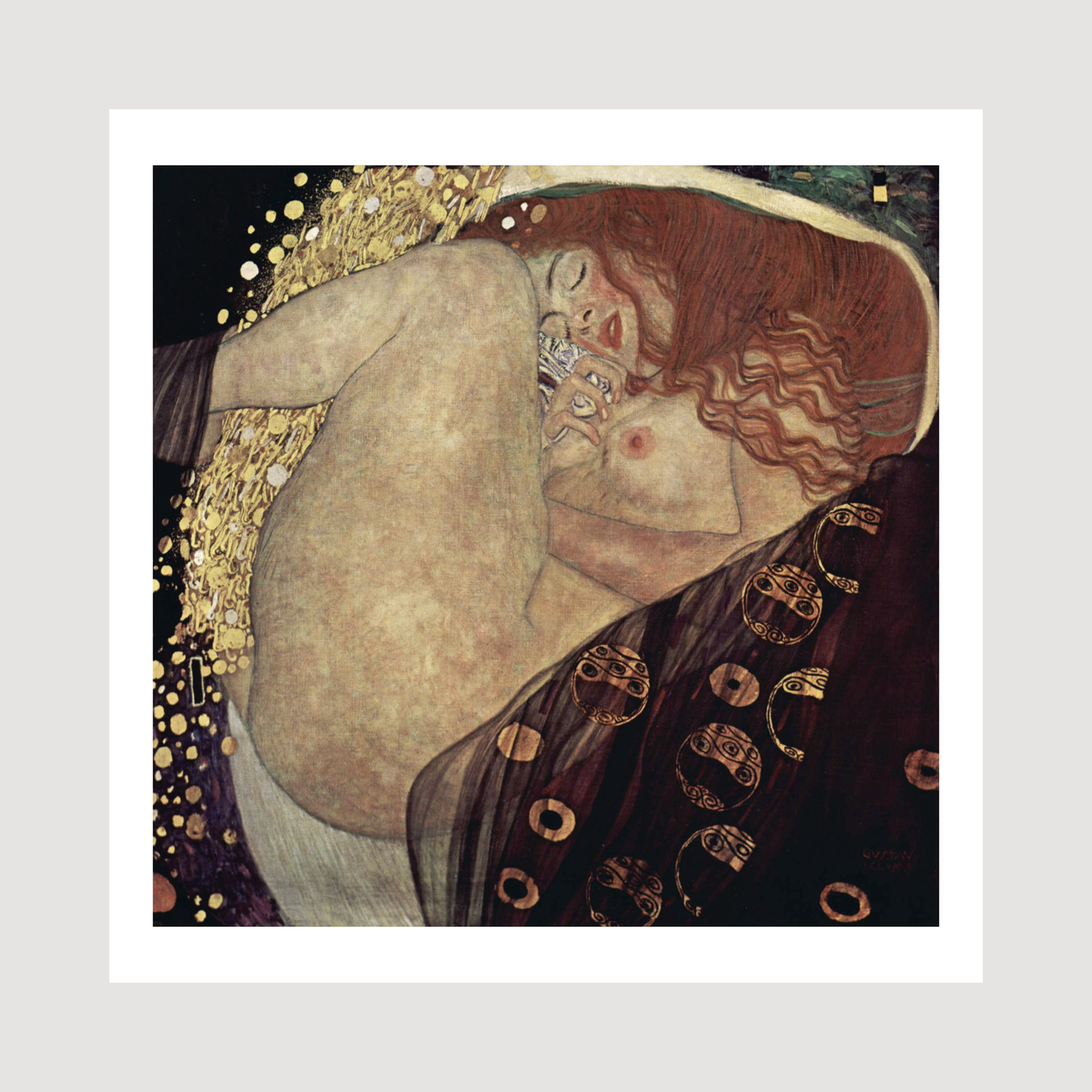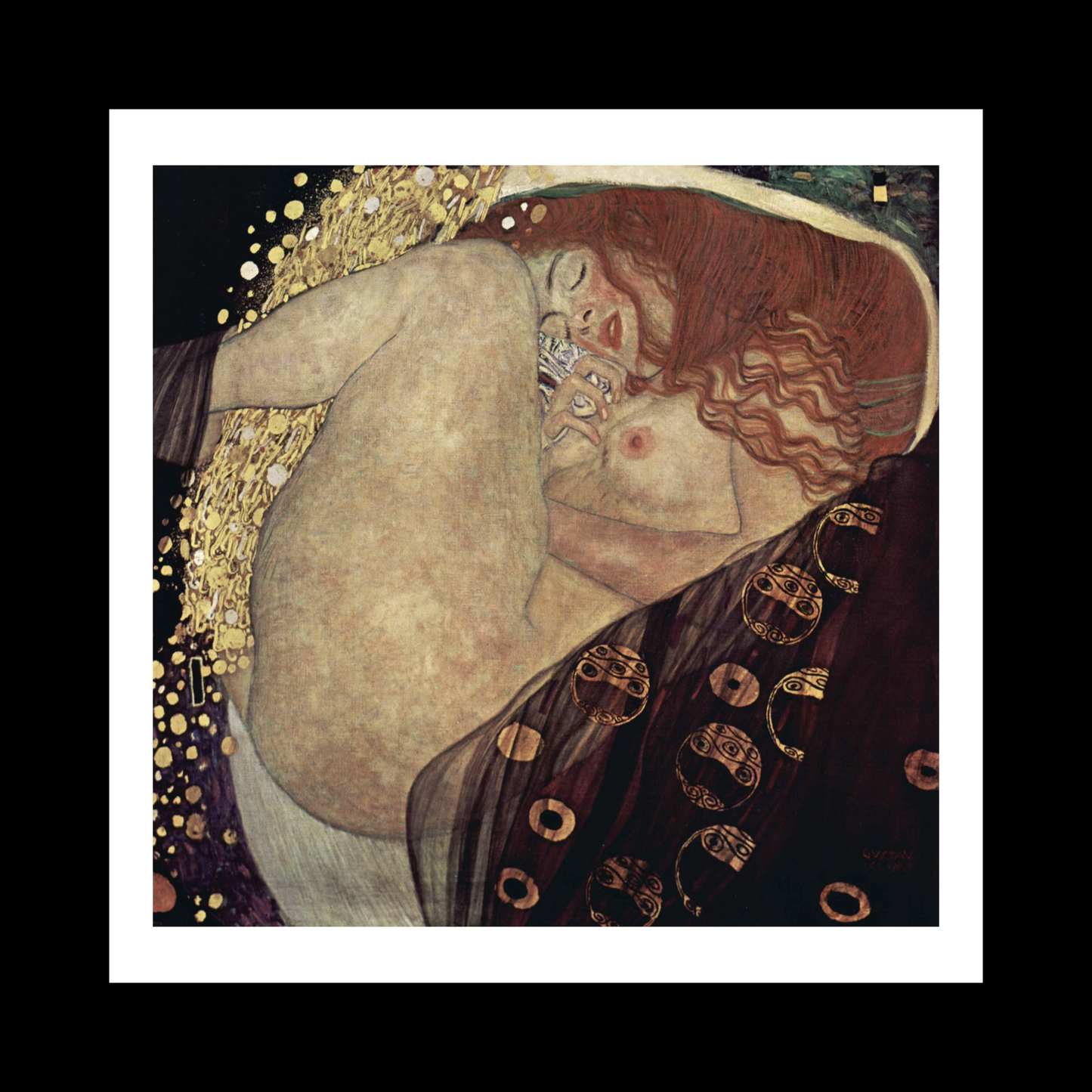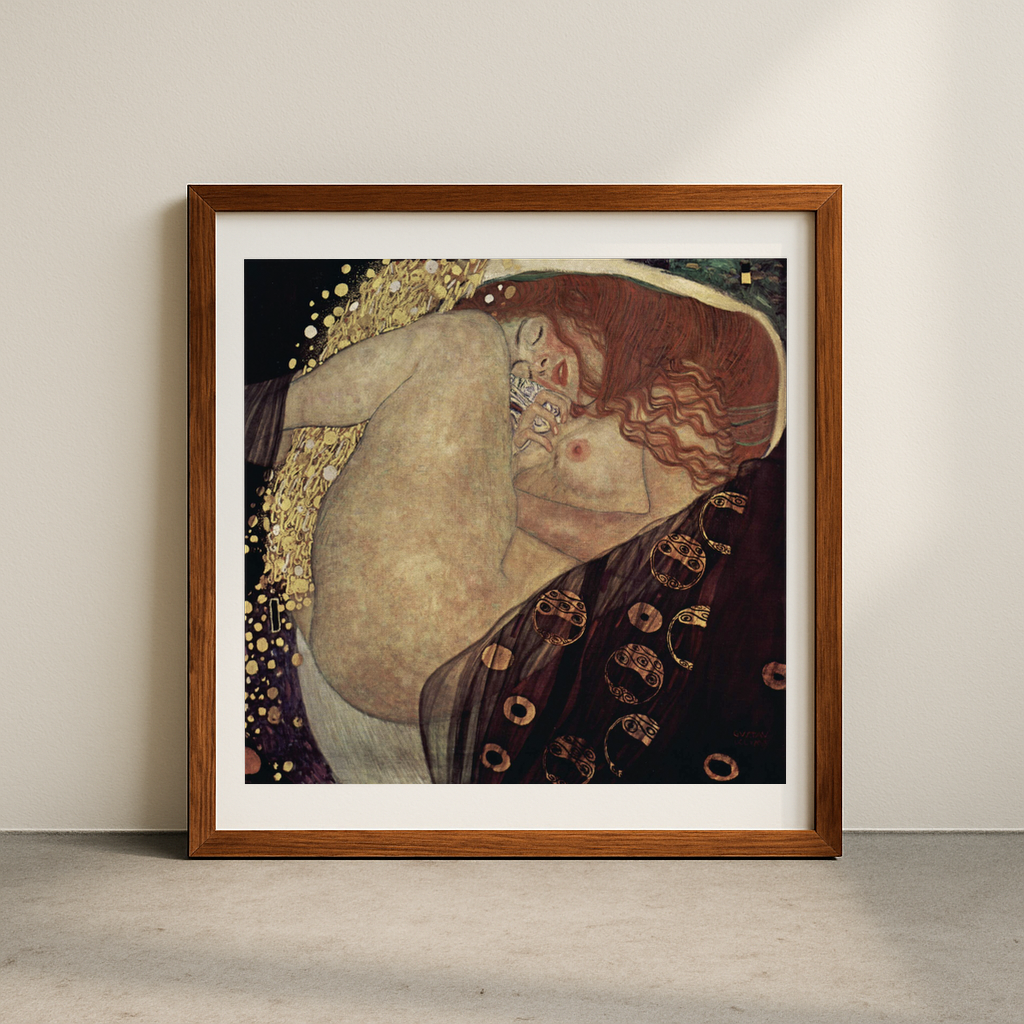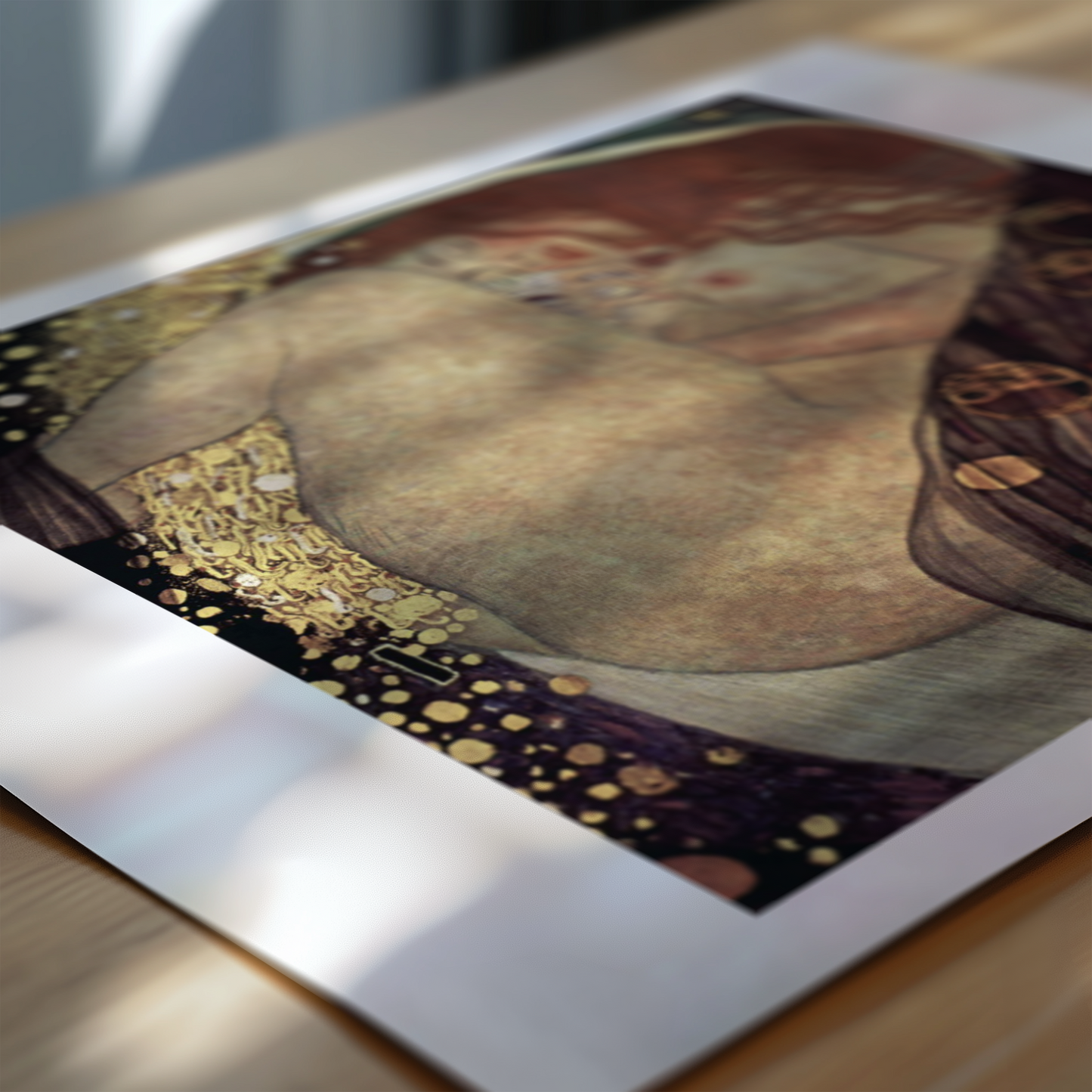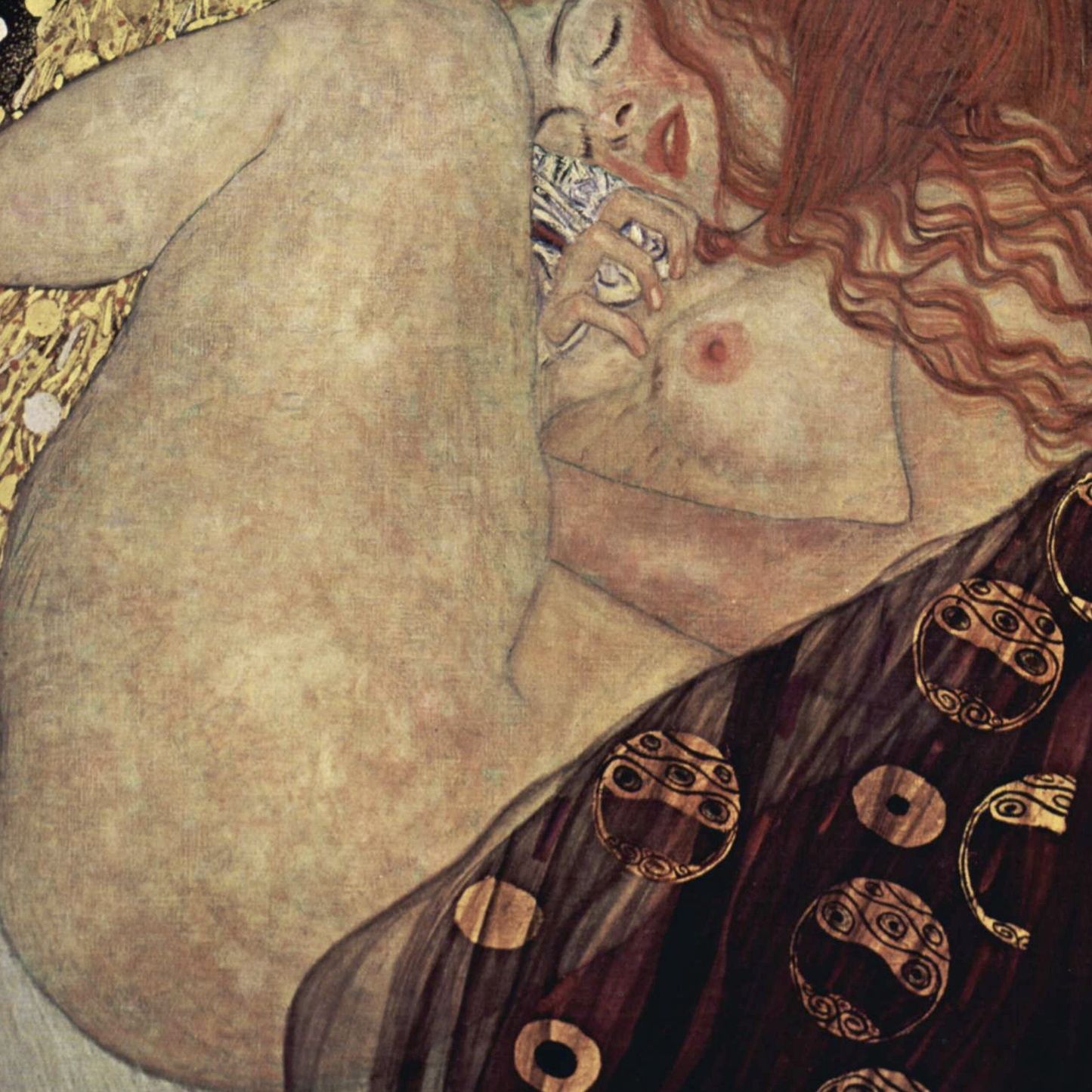1
/
of
6
Danae (1907-1908)
Danae (1907-1908)
Regular price
£12.45 GBP
Regular price
Sale price
£12.45 GBP
Taxes included.
Quantity
Couldn't load pickup availability
Gustav Klimt's 'Danae' (1907-1908) is a sensual and mythological painting that exemplifies the artist's distinctive 'Golden Period'. The work depicts the Greek myth of Danae, who was imprisoned by her father and visited by Zeus in the form of golden rain. Klimt renders this scene with characteristic opulence, using rich golds, deep reds, and flowing curves to create a dreamlike atmosphere.
The painting showcases Klimt's mastery of decorative elements and his unique approach to the female form. The subject is portrayed in a curled position, surrounded by sumptuous drapery and Klimt's signature golden swirls and geometric patterns. The composition brilliantly merges realistic flesh tones with abstract, ornamental elements, creating a tension between figurative and decorative art that defined the Vienna Secession movement.
This work reflects Klimt's fascination with female sexuality and his challenge to conservative Viennese society. Created during a time of significant cultural and artistic transformation in Vienna, 'Danae' embodies the era's shifting attitudes towards eroticism in art. The painting's combination of mythological narrative and modern artistic expression demonstrates Klimt's ability to bridge classical themes with revolutionary artistic techniques. His use of gold leaf and intricate patterns shows influence from Byzantine mosaics and Japanese art, while the subject matter connects to his broader exploration of female archetypes and sexuality in art.
The technical complexity of the piece lies in its layered approach, where Klimt combines oil paints with gold leaf and creates a rich tapestry of textures. The flowing hair of Danae melds seamlessly with the decorative elements, while the golden rain becomes both symbolic and visually striking, representing divine presence and earthly desire simultaneously.
View full details
The painting showcases Klimt's mastery of decorative elements and his unique approach to the female form. The subject is portrayed in a curled position, surrounded by sumptuous drapery and Klimt's signature golden swirls and geometric patterns. The composition brilliantly merges realistic flesh tones with abstract, ornamental elements, creating a tension between figurative and decorative art that defined the Vienna Secession movement.
This work reflects Klimt's fascination with female sexuality and his challenge to conservative Viennese society. Created during a time of significant cultural and artistic transformation in Vienna, 'Danae' embodies the era's shifting attitudes towards eroticism in art. The painting's combination of mythological narrative and modern artistic expression demonstrates Klimt's ability to bridge classical themes with revolutionary artistic techniques. His use of gold leaf and intricate patterns shows influence from Byzantine mosaics and Japanese art, while the subject matter connects to his broader exploration of female archetypes and sexuality in art.
The technical complexity of the piece lies in its layered approach, where Klimt combines oil paints with gold leaf and creates a rich tapestry of textures. The flowing hair of Danae melds seamlessly with the decorative elements, while the golden rain becomes both symbolic and visually striking, representing divine presence and earthly desire simultaneously.
